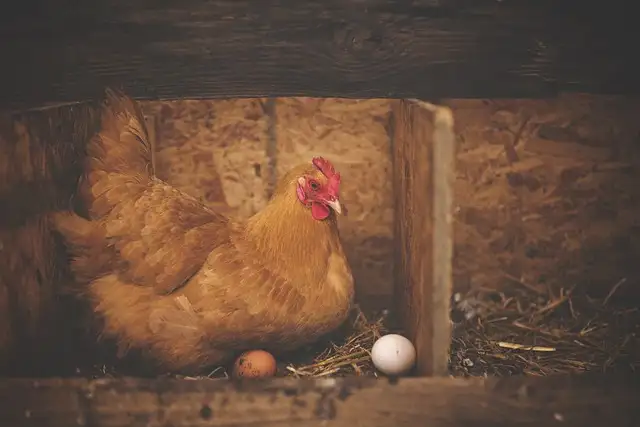The Kuroiler chicken were first introduced into East Africa through Uganda and then from Uganda into Kenya. It is an Indian breed that is well known for its good quality meat and the large number of eggs that it produces every year in Kienyeji conditions. These birds are scavengers, just like the ordinary kienyeji birds but the difference is that they eat almost all the time. The farmer does need to invest in costly commercial feeding for the Kuroiler chicken as they can easily fend for themselves by scavenging. Thanks to their appetite, they put on weight very fast.
It is a bird that has changed the fortunes of many families in rural areas. These families are able to produce a lot of meat and a large number if eggs without any massive investment. The birds also have a very high survival rate compared to other exotic breeds. The Kuroilers survive in the same condition just like the local kienyeji birds and the most important thing is that they have a higher rate of productivity than the local kienyeji birds.
Kuroiler chicken grow faster
Perhaps this is the biggest advantage of the Kuroiler chickens. They grow very fast. The best thing is that they grow fast without any special commercial feeding. They can put on weight very quickly in scavenging environment while feeding on leftovers of food, grass, termites and many other kinds of food.

If a farmer is able to supplement the Kuroiler feeding with some commercial feeding or even locally available feeds such as yellow maize, soya, omena and even the chicken mash, the Kurpiler can do really well. You need to vaccinate and deworm them just like you would other kinds of chicken on a regular schedule but that’s just about the kind of management effort that you will have to put up for your Kuroiler hens.
When Do Kuroiler Start Laying Eggs?
The Kuroiler chickens begin laying eggs at five months. Once they start, they will lay continuously for a period of 2 years. They also produce very big eggs with bright dark yellow egg yolks which are much preferred by many buyers. The Kuroiler eggs also contain more nutrients thanks to their scavenging lifestyle which exposes them to more nutrients during their feeding.
Get More Eggs with Kuroiler
The Kuroiler hens produce at least 150-200 eggs per year compared to the ordinary kienyeji chickens which produce about 40 eggs per year. This is one of the reasons why the Kuroiler hens have been billed as the number one poverty eradicators. A farmer is able to increase their production four-fold without any costly investments in feeding or housing. It is important to note that unlike the local chicken, the Kuroiler hens do not brood i.e., they do not sit on their eggs. So if you want Kuroiler chicks, you will need to invest in an incubator.
Hatchability
The Kuroiler will not brood or sit on their eggs. However, when their eggs are put in the incubators or hatchery, they produce good hatchability results, meaning majority of these eggs will hatch compared to those of the local Kienyeji chicken. You can get hatchability of 80% and above.
Get More Meat with Kuroiler
The Kuroiler chickens will mature in 10 weeks compared to other ordinary birds which can take as many as months before they mature. At maturity, the Kuroiler chickens will weigh up to 3.5Kgs which makes them better than broilers which generally weigh 2.0 to 2.5Kgs at maturity.
Kuroiler Housing and Rearing System
Kuroiler have all the advantages of the local kienyeji which means you can keep them in the same housing where you keep your kienyeji. You can rear them in a fully free range or in semi free range conditions. The Kuroiler can also be reared in small spaces in the urban centres.